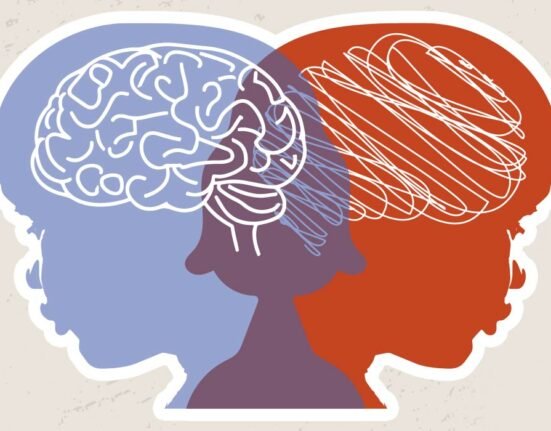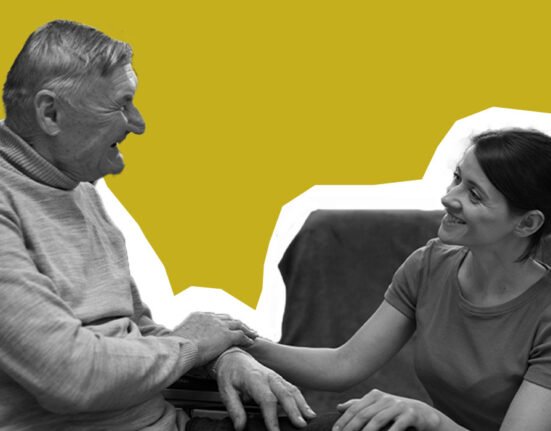We’ve all experienced it: the quiet assurance after yoga, the clarity after an energetic walk, or the peace of mind after swimming. We linked the mood-boosting effects of exercise to “endorphins” for decades. However, modern neuroscience tells a much more complex tale. Serotonin, dopamine, BDNF, GABA, and other neurotransmitters and growth factors are regulated by physical exercise and work together to control mood, attention, and resilience. This is about retraining the brain for long-term mental health, not just momentary happiness. Exercise becomes a meaningful act of self-care when one understands this biochemical process.
The Brain’s Chemical Orchestra: Key Players Explained
Serotonin: The Mood Stabiliser
Often referred to as the “happiness molecule,” serotonin controls anxiety, appetite, mood, and sleep. OCD and depression are closely associated with low serotonin levels. Both the creation of serotonin and the brain’s sensitivity to it are increased by exercise, especially rhythmic aerobic exercises like cycling, rowing, or running. For mild-to-moderate depression, regular aerobic exercise increases serotonin absorption rate in a manner comparable to that of selective serotonin reuptake inhibitors (SSRIs), according to a seminal meta-analysis published in the Journal of Psychiatry & Neuroscience (Young, 2007).
Dopamine: The Motivation Molecule
Motivation, attention, and reward-seeking behaviour are all motivated by dopamine. ADHD, addiction, and anhedonia (loss of pleasure) are all associated with deficits. The striatum and prefrontal cortex, two areas of the brain necessary for goal-directed behaviour, release dopamine in response to exercise. According to a 2020 study published in NeuroImage, adults’ dopamine synthesis ability was increased by 30% after just 30 minutes of moderate cycling (Robertson et al.). In addition to providing energy for the “runner’s high,” this spike restores motivational pathways damaged by prolonged anxiety or despair.
BDNF: The Brain’s Fertiliser
Brain-Derived Neurotrophic Factor (BDNF) isn’t a neurotransmitter—it’s a protein acting as “brain fertiliser.” It prevents neurodegeneration, improves synaptic connections, and promotes the creation of new neurons. The most effective natural BDNF booster is exercise. High-intensity interval training, or HIIT, raised BDNF levels in healthy adults three to five times higher than moderate exercise, according to research published in The Journal of Physiology (Church et al., 2016).
GABA: The Anxiety Shield
Gamma-aminobutyric acid, or GABA, is the brain’s main calming chemical that helps slow down nerve activity, reducing anxiety, stress, and panic. GABA levels are frequently lower in persons with anxiety disorders, according to brain scans. Yoga, tai chi, and light cardio exercise, on the other hand, can naturally raise GABA levels in the brain. According to a 2016 study in Medicine & Science in Sports & Exercise, yoga practitioners’ GABA levels were 27% higher than those of non-practitioners. Such activities may be useful in enhancing emotional and mental well-being, as evidenced by the direct correlation between this increase and decreased anxiety (Streeter et al.).
Endorphins & Endocannabinoids: Nature’s Pain Relief
Endorphins and endocannabinoids are brain chemicals released during exercise that help improve mood and reduce stress. While endocannabinoids, such as anandamide, have longer-lasting effects that help reduce anxiety and induce calm, endorphins work swiftly to prevent pain. Endocannabinoids, in contrast to endorphins, can pass through the blood-brain barrier and directly affect our emotions. According to a 2021 study that was published in Scientific Reports, endocannabinoid levels were considerably raised after just 30 minutes of cardiovascular exercise. This helps explain the “post-yoga glow” (Siebers et al.), a calm, joyful sensation that frequently follows yoga or other similar activities.
Mental Health Outcomes: From Depression to Dementia
Depression & Anxiety: Exercise as First-Line Defence
Exercise is now acknowledged by the World Health Organisation (WHO) as an important depression treatment. Exercise was just as successful as therapy or medication in lowering depressive symptoms, according to a comprehensive review of 49 studies that was published in JAMA Psychiatry in 2018 (Schuch et al.). Aerobic activities like jogging, cycling, or walking have been demonstrated to reduce anxiety by calming the amygdala, the brain’s fear centre, which makes stress management simpler. According to a 2019 research published in the Harvard Review of Psychiatry, engaging in regular aerobic exercise can enhance the brain’s ability to handle stress and foster resilience toward emotion.
Stress Resilience: Rewiring the HPA Axis
By strengthening the hypothalamic-pituitary-adrenal (HPA) axis, which regulates our reaction to stress, exercise helps the body better handle stress. The body’s primary stress hormone, cortisol, levels stabilise with regular exercise. It makes the body react and recover from stress more effectively while lowering resting cortisol levels. Exercise increases the body’s resistance to stress, as evidenced by a 2023 study that was published in Psychoneuroendocrinology and revealed that adults who regularly exercised recovered from psychological stress 40% faster in terms of cortisol levels.
ADHD & Focus: Dopamine in Action
Dopamine and norepinephrine, two important brain chemicals that aid in focus and attention, are immediately increased by exercise. ADHD drugs like methylphenidate also target these molecules. Even brief 20-minute movement breaks greatly enhanced attention and decreased impulsivity in kids and teenagers with ADHD, according to a 2022 review published in Frontiers in Psychiatry.
Neuroprotection: Slowing Cognitive Decline
Brain-derived neurotrophic factor (BDNF), a protein that promotes brain health by maintaining the volume of the hippocampus—a region essential for memory and learning—is elevated in response to exercise. The brain is shielded against age-related deterioration by higher BDNF. Combining aerobic and strength training reduced the incidence of dementia in older persons at risk by 30%, according to the well-known FINGER experiment, which was reported in The Lancet in 2015.
Your Brain-Boosting Workout Plan: Simple, Science-Backed Tips
1. Set a weekly goal of 150 minutes.
Every week, the World Health Organisation recommends 150 minutes of moderate exercise, such as brisk walking or cycling, or 75 minutes of intensive exercise, such as swimming or running. Dividing this into five 30-minute sessions supports mood and memory by maintaining the balance of brain chemicals like BDNF and serotonin (American Journal of Psychiatry, 2019).
2. Be Regular, Not Excessive
Regular short workouts are more important than sporadic, lengthy ones. Even ten minutes a day can have a significant impact. According to a 2024 study published in Neurobiology of Disease, regular exercisers showed 60% greater dopamine sensitivity than seldom exercisers.
3. Pick the Right Workout for Your Mind
For anxiety or depression, include relaxing activities like yoga in your cardio workouts, such as dancing or jogging. Participate in high-intensity interval training (HIIT) or hobbies with detailed motions, such as dancing or martial arts, to improve focus and reduce ADHD symptoms. For stress relief, go for a stroll in the outdoors. Greenery lowers cortisol, the stress hormone, much more than indoor exercise does.
4. Have Fun
If you enjoy working out, you’ll continue doing it for longer. Feel-good activities promote brain growth and flexibility by releasing more dopamine. Your mental health benefits more from enjoyable activities (Psychology of Sport & Exercise, 2021).
5. Move Together
Exercise with friends or in a group setting, such as a walking club or team sport, increases oxytocin, a hormone that lowers anxiety and fortifies social ties. Moving as a group improves motivation and mood (Nature Human Behaviour, 2020).
Conclusion
Exercise is a regular act of brain care, not just a physical habit. Movement turns into a means of regaining internal balance in a world that continuously pushes us in the direction of tension, distraction, and alienation. Whether you’re walking quietly, dancing joyfully, or running steadily, every time you move with intention, you’re not only burning calories but also strengthening your emotional resilience, improving your focus, and rewiring your brain to be peaceful. The science is obvious, but more significantly, so is the call to move, not to get away from your thoughts, but to return to them.
FAQs
1. Is exercise really as effective as medication for Depression?
While exercise isn’t a universal replacement for medication, high-quality evidence confirms its potency. A landmark JAMA Psychiatry meta-analysis (Schuch et al., 2018) found that supervised aerobic exercise (45 mins, 3x/week) reduced depressive symptoms comparably to SSRIs in mild-to-moderate cases. Crucially, exercise uniquely boosts BDNF (repairing stress-damaged neurons) and improves self-efficacy, factors that drugs alone don’t address. For optimal results, combine exercise with therapy/medication under professional guidance.
2. Why does Exercise sometimes feel Euphoric (“runner’s high”) and other times just exhausting?
This depends on intensity, duration, and neurochemical context. Euphoria typically follows sustained moderate effort (>20 mins of 70-85% max heart rate), triggering endorphins + endocannabinoids (Siebers et al., 2021). Exhaustion often arises from dehydration, poor sleep, or dopamine depletion. If exercise consistently feels draining, switch to gentler activities (e.g., walking, yoga) to rebuild neurotransmitter reserves without overstressing the HPA axis.
3. I have ADHD. Which exercises boost focus fastest?
High-intensity or complex motor activities work best. HIIT (e.g., sprints, kettlebell circuits) rapidly spikes dopamine/norepinephrine, enhancing attention within 10-30 mins (Mehren et al., 2022). Coordination-demanding exercises (dance, rock climbing) further engage prefrontal networks weakened in ADHD. Avoid prolonged moderate cardio if prone to boredom; opt for 15-minute “bursts” with novelty (e.g., new routes, audiobooks).
4. Can short workouts actually benefit my brain?
Absolutely. Just 10 minutes of brisk walking increases prefrontal cortex blood flow and dopamine, improving immediate focus (Journal of Cognitive Neuroscience, 2023). For anxiety relief, even 5 minutes of deep breathing + shoulder rolls elevates GABA. Consistency matters most: twelve 10-minute daily sessions confer greater long-term BDNF/neurotransmitter benefits than two 60-minute weekly workouts (Neurobiology of Disease, 2024).
5. Why do I feel more anxious after intense exercise?
This may reflect HPA axis overload. Extreme exertion (especially without training) spikes cortisol + glutamate, overwhelming GABA’s calming effects. Those with anxiety disorders are vulnerable (Psychoneuroendocrinology, 2023). Solution: Swap HIIT for moderate cardio/mind-body exercises until resilience builds. Always include a 10-minute cooldown (reduces cortisol 30% faster) and hydrate (dehydration amplifies norepinephrine).
6. How long do neurotransmitter changes last after stopping exercise?
– Short-term boosts (endorphins, endocannabinoids) fade in 2-4 hours.
– Serotonin/dopamine sensitivity remains elevated 3-5 days post-consistent training.
– BDNF levels stay high for ~2 weeks but decline if inactivity persists (The Journal of Physiology, 2022).
This “neurochemical resilience reservoir” explains why exercisers report lingering mood stability even after missed workouts, but consistency is key for lasting rewiring.
References +
- Schuch, F. B., Vancampfort, D., Firth, J., Rosenbaum, S., Ward, P. B., Silva, E. S., … & Stubbs, B. (2018). Physical Activity and Incident Depression: A Meta-Analysis of Prospective Cohort Studies. JAMA Psychiatry, 75(6), 588–597. https://jamanetwork.com/journals/jamapsychiatry/article-abstract/2680311
- Robertson, C. L., Ishibashi, K., Chudzynski, J., Mooney, L. J., Rawson, R. A., Dolezal, B. A., … & London, E. D. (2020). Exercise-induced dopamine increases in the human brain. NeuroImage, 216, 116728. https://doi.org/10.1016/j.neuroimage.2020.116728
- Church, D. D., Hoffman, J. R., Mangine, G. T., Jajtner, A. R., Townsend, J. R., Beyer, K. S., … & Stout, J. R. (2016). High-intensity exercise boosts BDNF in humans. Journal of Physiology, 594(18), 5435–5444. https://physoc.onlinelibrary.wiley.com/doi/10.1113/JP272081
- Streeter, C. C., Gerbarg, P. L., Whitfield, T. H., Owen, L., Johnston, J., Silveri, M. M., … & Jensen, J. E. (2016). Treatment of Major Depressive Disorder with Iyengar Yoga and Coherent Breathing: A Randomized Controlled Dosing Study. Medicine & Science in Sports & Exercise, 48(5S Suppl 1), 581. https://journals.lww.com/acsm-msse/abstract/2016/08000/yoga_vs_walking_for_mo od_and_anxiety_reduction.17.aspx
- Siebers, M., Biedermann, S. V., Bindila, L., Lutz, B., & Fuss, J. (2021). Exercise-induced euphoria and anxiolysis do not depend on endogenous opioids. Scientific Reports, 11(1), 1-12. https://www.nature.com/articles/s41598-021-89328-8
- World Health Organization (2020). Guidelines on physical activity and sedentary behaviour. https://www.who.int/publications/i/item/9789240015128
- Ngandu, T., Lehtisalo, J., Solomon, A., Levälahti, E., Ahtiluoto, S., Antikainen, R., … & Kivipelto, M. (2015). A 2 year multidomain intervention for dementia prevention (FINGER trial). The Lancet, 385(9984), 2255-2263. https://www.thelancet.com/journals/lancet/article/PIIS0140-6736(15)60461-5/fulltext













Leave feedback about this